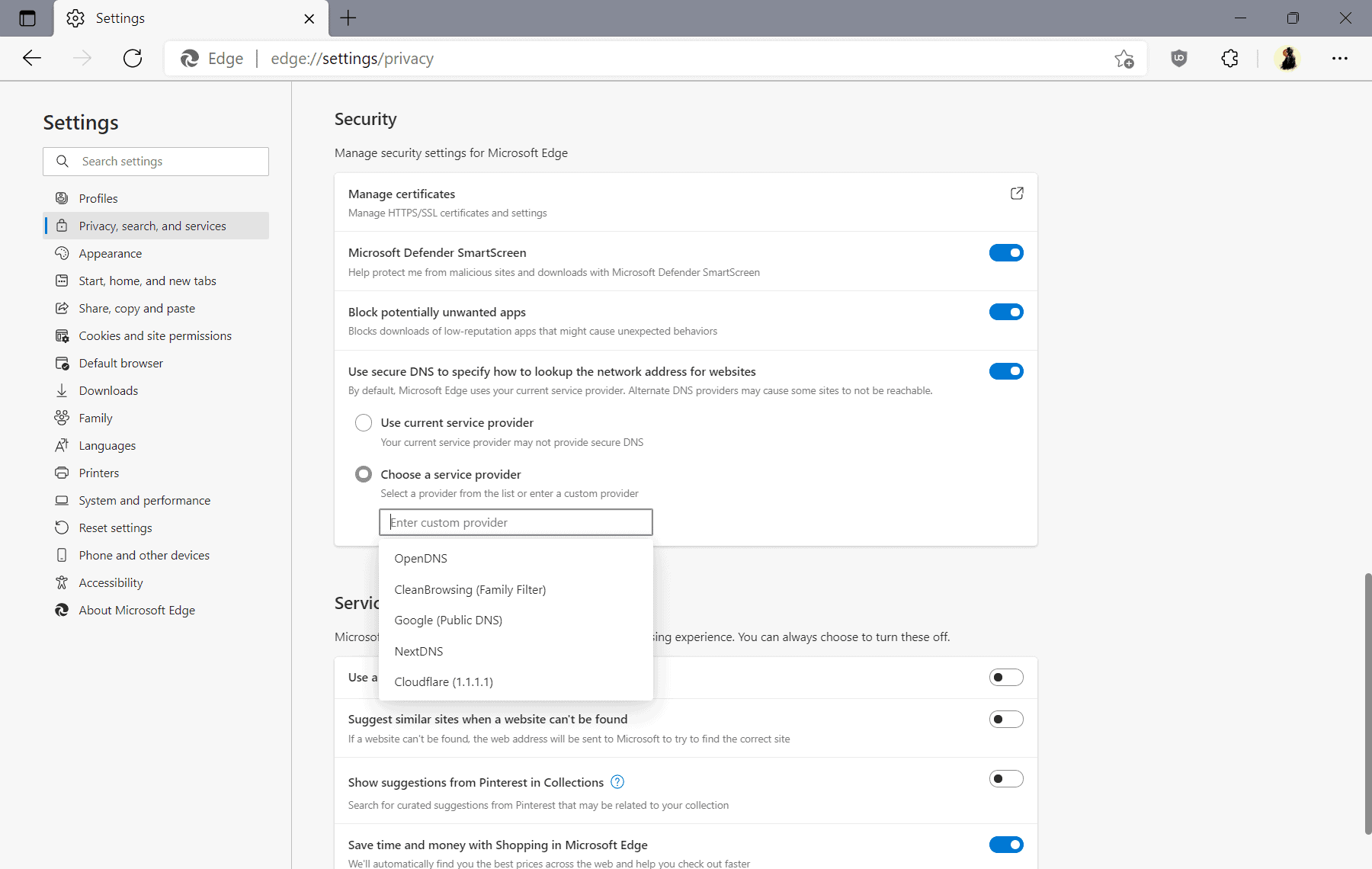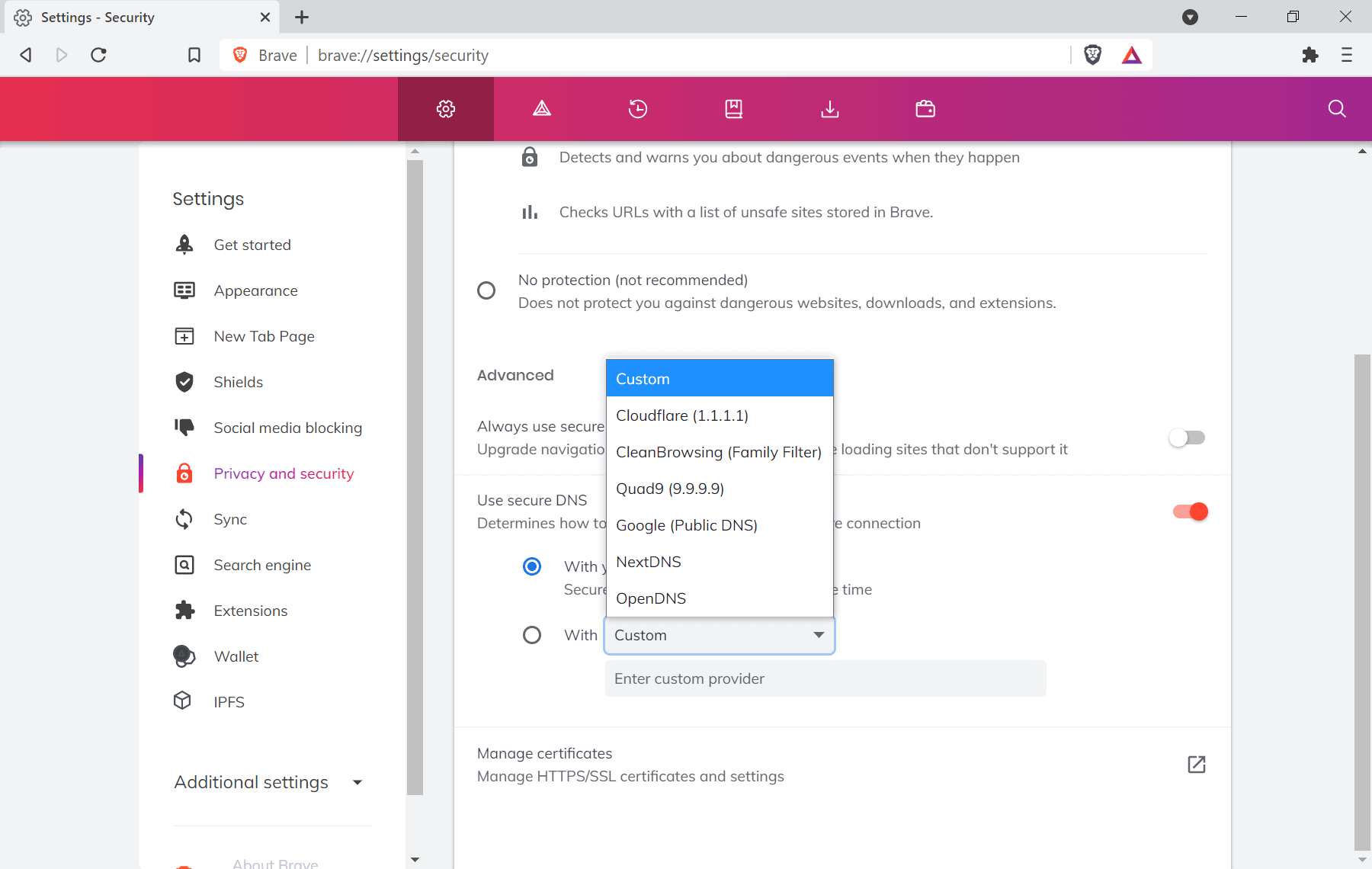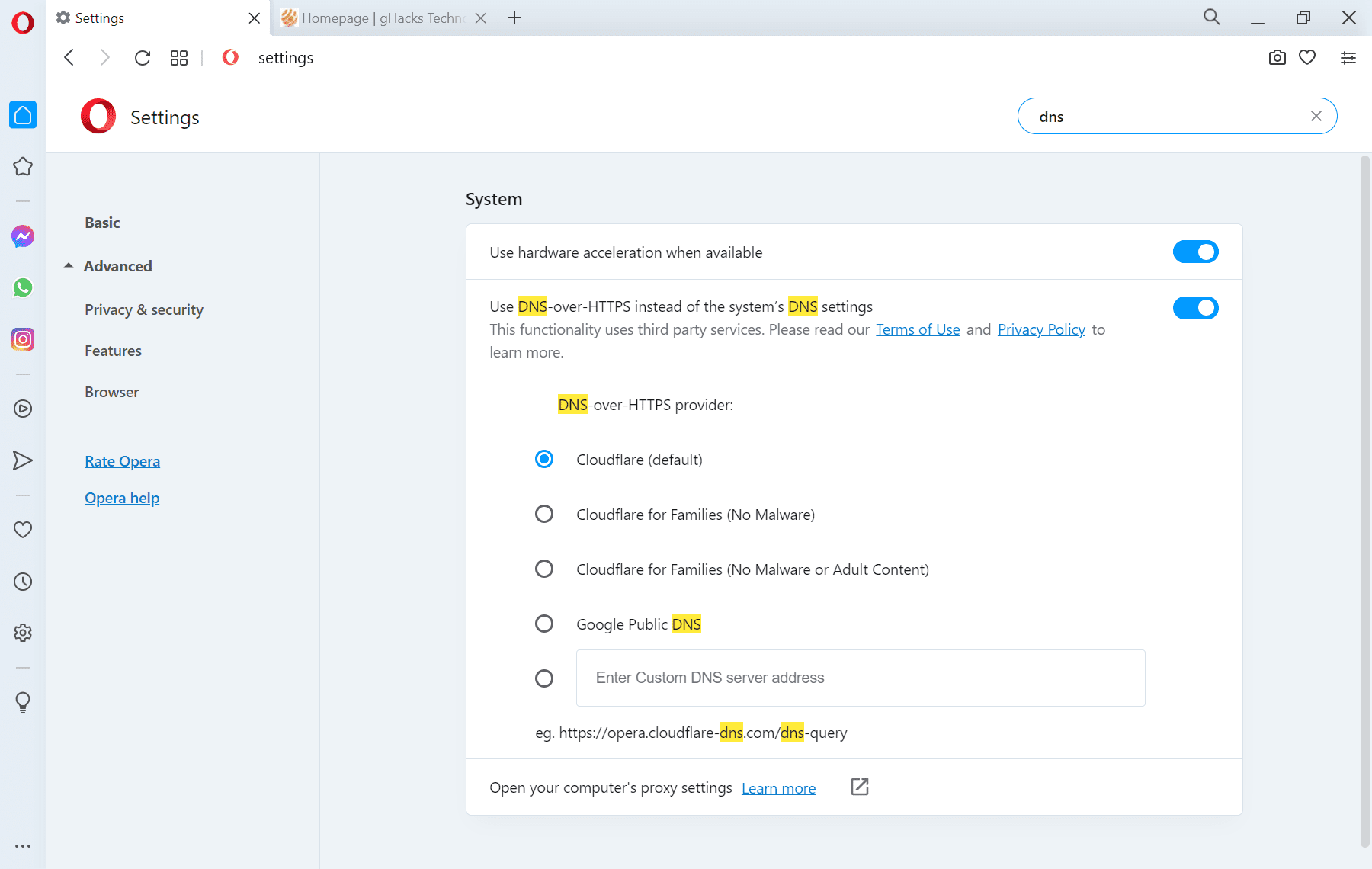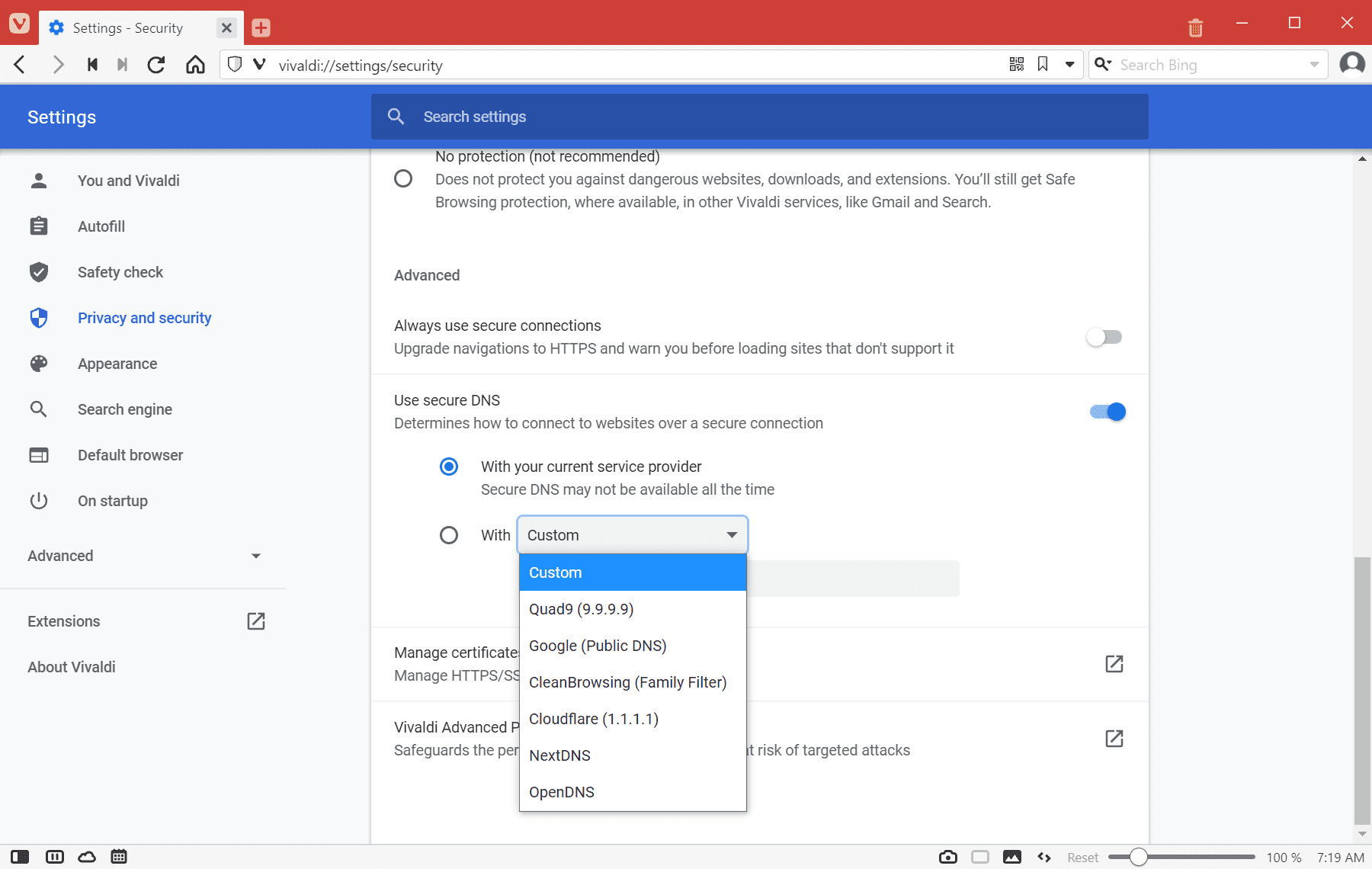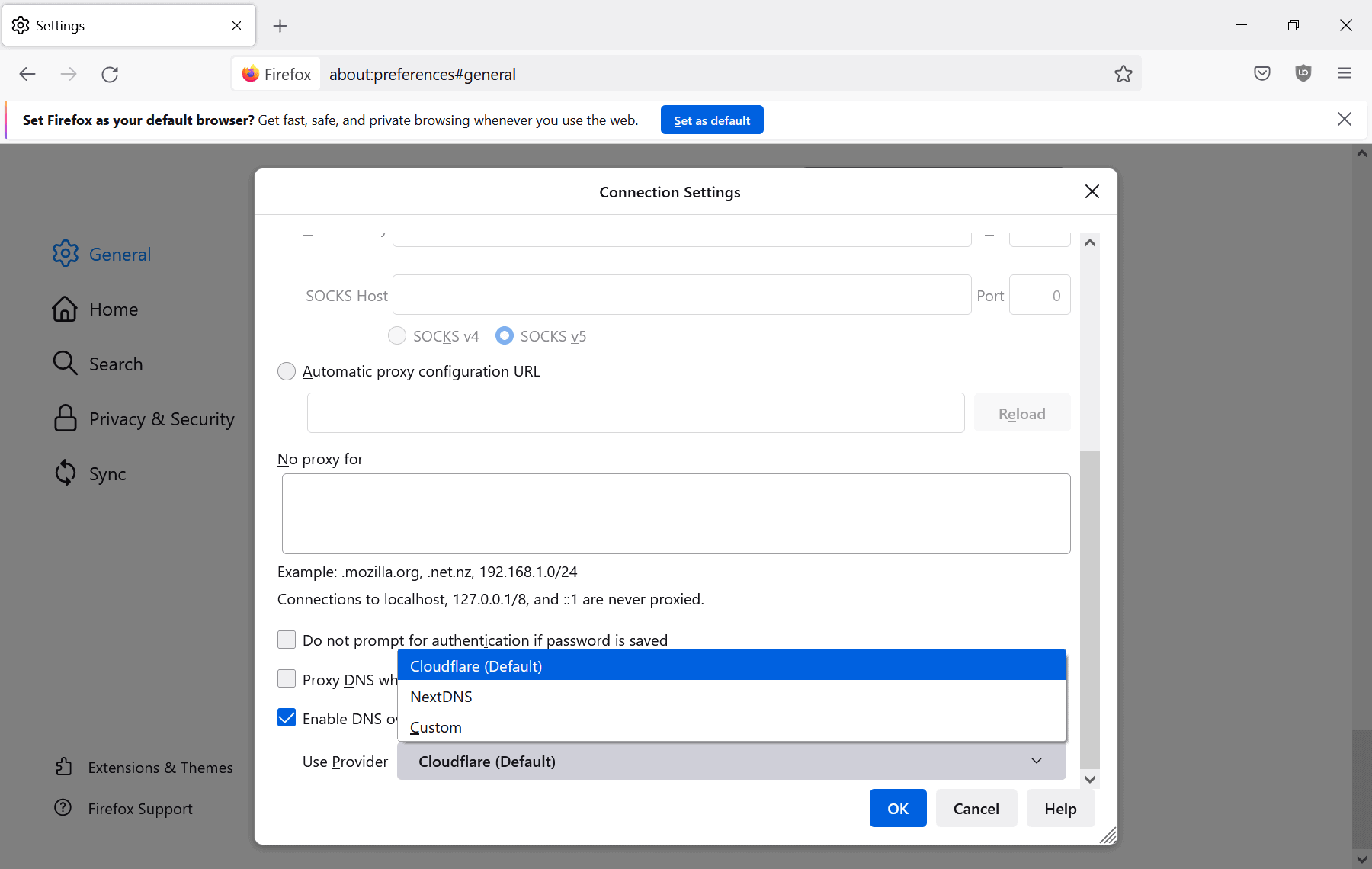How to enable DNS-over-HTTPS (Secure DNS) in Chrome, Brave, Edge, Firefox and other browsers
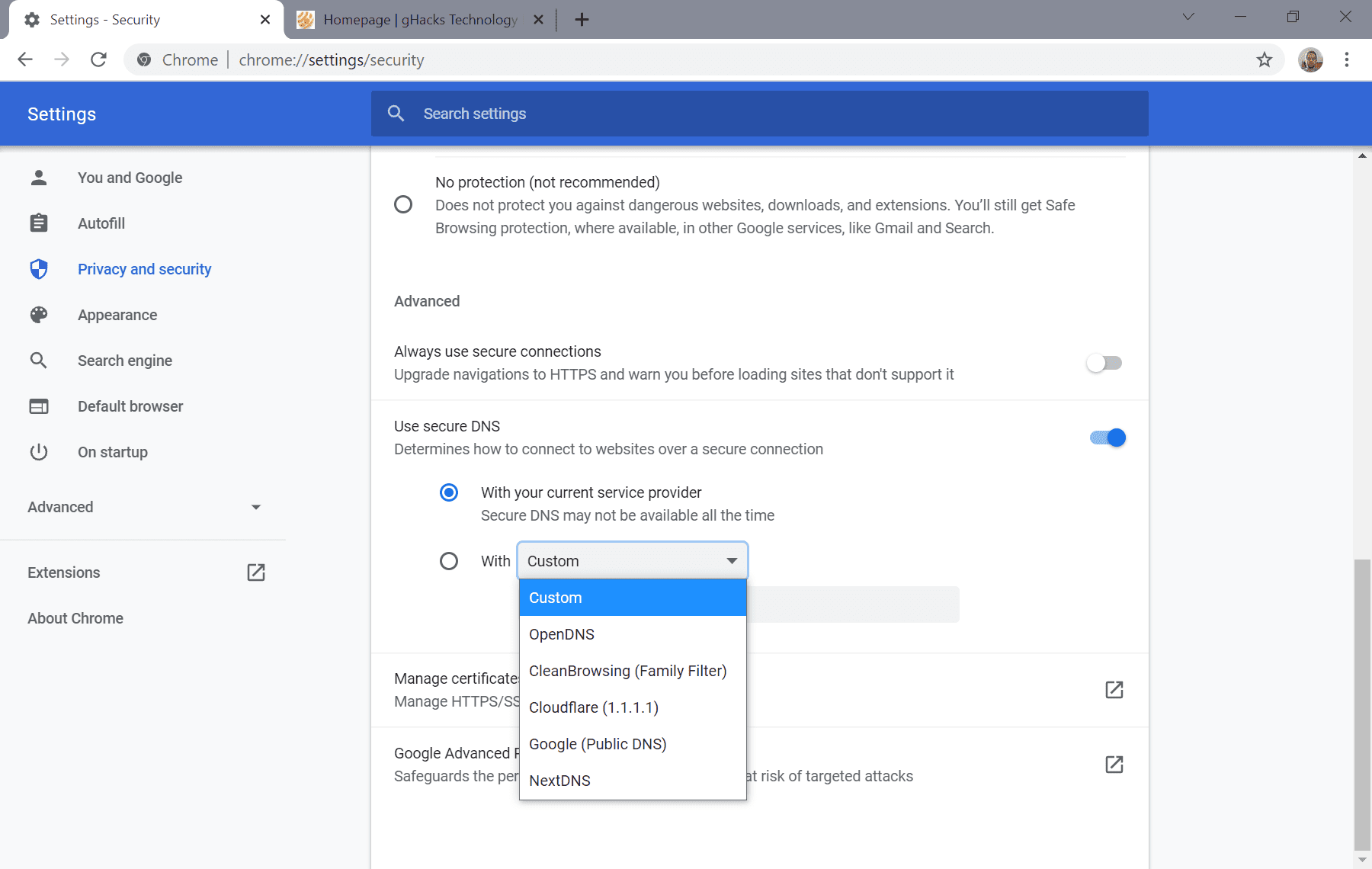
DNS-over-HTTPS, known as Secure DNS in most Chromium-based browsers, is a relatively new feature in modern web browsers designed to protect DNS information. DNS is used in most user queries on the Internet, such as when you click a link in a browser or manually enter a site in the browser’s address bar. Until recently, these requests were in plain text; This meant that your ISP and other users on the same network could get a clear log of all your internet activity.
DNS translates human-readable domain names and host names into IP addresses for use by computers. Secure DNS encrypts the data, which protects it from snooping and also manipulation. Secure DNS in Chromium-based browsers is disabled by default, unless a secure DNS provider is used on the system.
Since it is beneficial to enable Secure DNS, users may want to check their browser settings to make sure it is enabled, or to enable it if it is not.
advice: you can test if your browser supports secure DNS.
Configure secure DNS in Google Chrome
To start in Google Chrome, load the browser security page by pasting the following URL into the browser’s address bar: chrome: // settings / security. If you prefer to access it manually, select Menu> Settings> Privacy and security> Security.
The “Use secure DNS” preference determines whether the feature is enabled or disabled. If it’s off, toggle it to turn it on. You have two main options at this point:
- Configure Chrome to use the system’s default DNS provider
- Select one of the predefined secure DNS providers or define a custom provider.
The first option only works if the default DNS provider supports secure DNS. Many ISPs don’t, and it’s usually best to choose a specific DNS provider from the list of providers Chrome supports or add a custom provider.
Select the “With” option and choose one of the predefined providers, OpenDNS, CleanBrowsing, Cloudflare, Google or NextDNS, or select Custom to add a custom provider using a URL (these are provided by the provider).
Configure Secure DNS in Microsoft Edge
Configuring Secure DNS in Microsoft Edge uses a similar system. Load edge: // settings / privacy directly in the browser’s address bar, or go to Menu> Settings> Privacy, search and services manually.
The “Use secure DNS to specify how to find the network address of websites” preference determines whether secure DNS is enabled. If it’s off, toggle it to turn it on. Edge uses the current service provider, that is, the DNS provider defined on the system, by default. Go to “Choose a service provider” and click in the field below to choose a predefined provider or to add a custom provider using a specific URL.
Configure secure DNS in the Brave browser
Brave largely follows Chromium’s default implementation of Secure DNS. Load brave: // settings / security in the browser’s address bar to get started, or select Menu> Settings> Privacy & security manually instead to open the settings page.
The “Use secure DNS” setting determines whether secure DNS is enabled in the browser. By default, the system service provider is used. You can switch to “With” to select one of the predefined providers or to define a custom provider. Brave supports Quad9 alongside the default selection of providers supported by Chrome.
Configure secure DNS in Opera
Opera Browser also supports secure DNS, called DNS-over-HTTPS. Directly load opera: // settings /? Search = dns or go to Opera menu> Settings> Advanced> Browser, and scroll to the System preference group.
The “Use DNS over HTTPS instead of the system’s DNS setting” preference determines whether secure DNS is enabled. If not, enable the preference to get a selection of vendors and an option to define a custom vendor.
Opera lists several Cloudflare and Google Public DNS-only options.
Configure secure DNS in Vivaldi
Vivaldi follows the implementation of Chromium. It’s a little weird that you can’t find the option when browsing through the usual settings or looking for it in settings. You need to load vivaldi: // settings / security in the browser to display the option.
There you will find the option to toggle “Use secure DNS†to enable or disable the feature, and to toggle between using the system provider, a predefined provider, or a custom provider. Like Brave, Vivaldi supports Quad9 alongside all other vendors.
Configure DNS over HTTPS in Firefox
Firefox also supports DNS-over-HTTPS. Browser users should load about: preferences # general in the address bar and enable the Settings button under Network settings on the page that opens.
The “Enable DNS over HTTPS” setting determines whether the feature is enabled or not. Check the box to enable it. Firefox only includes two predefined providers, Cloudflare and NextDNS, but also has the option to define a custom provider.
Closing words
Most Chromium and Firefox based browsers support similar options.
Now you: Have you enabled Secure DNS / HTTPS over DNS?
Summary

Article name
How to enable DNS-over-HTTPS (Secure DNS) in Chrome, Brave, Edge, Firefox and other browsers
The description
Find out how to enable Secure DNS / HTTPS-over-DNS in modern web browsers to improve privacy and security when using the web browser.
Author
Martin Brinkmann
Editor
Ghacks Technology News
Logo

Advertising
